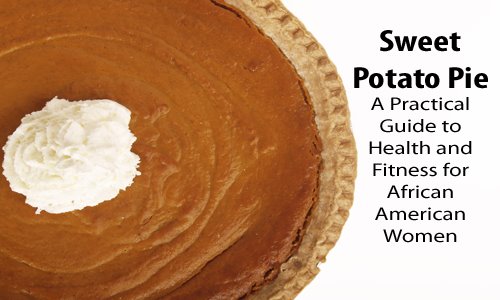 As we've already established, sleep is one of the easiest things you can do to aid in your weight loss. But with the extremely busy, stressful lives many of us lead, a good night's sleep can be as elusive as the rumored pot of gold at the end of the rainbow.
As we've already established, sleep is one of the easiest things you can do to aid in your weight loss. But with the extremely busy, stressful lives many of us lead, a good night's sleep can be as elusive as the rumored pot of gold at the end of the rainbow.
While there are many sleep aids, many can become addictive and have unpleasant side effects. One of the most natural and cheapest sleep aids is a glass of warm milk. Milk helps promote better sleep and tastes pretty good to boot. Yes, the simple remedy your momma gave you as a child can still work for you as an adult.
Not realizing that her goal was to put me to bed quick, my mother used to give me warm milk and cookies at bed time just about every night. And yes - I slept like the baby I was. So if you want to sleep like a baby - drink up - 'cause that good night sleep could turn into a great day on the scale.
Monday, August 18, 2008
Need a Good Night's Sleep - Got Milk?
If you liked this post,buy me a cup of coffee! Thanks!
Posted by Healthy Living 101 at 9:35 PM 4 comments
Labels: link between sleep and weight gain, Milk, weight loss
Wednesday, August 13, 2008
You Can be Thick and Healthy
 There's been a lot of talk around the blogsphere as late on Black women and their thickness and how aspiring to be thick causes women to be unhealthy, overweight and obese.
There's been a lot of talk around the blogsphere as late on Black women and their thickness and how aspiring to be thick causes women to be unhealthy, overweight and obese.
Well, in my opinion, there is a very big difference between being thick and fat. If you're confused the following is easy to remember: Beyonce = Thick. Monique = Fat. Simple.
You can be thick and healthy. Contrary to popular belief ass and thigh fat won't kill you, but belly fat will. As women we should keep our waist under 31.5 inches for optimal health and to fight against common illnesses among Black women such as diabetes, heart disease and hyper tension.
Let's be clear, Black women are naturally curvy, "thick" women. There is nothing wrong with that. You don't have to lose your curves just because you're trying to be healthy. But health should be your number one priority above all else. I assure you, if you're a naturally big butt/big hip woman that's not going to disappear because you hit the treadmill or the Starimaster several times a week. As I like to say this isn't about being a size 6 . It is about being a healthier, happier you. So keep that in mind...and hit the gym.
Today is a new day. So what are you waiting for.
Related Posts
Big Butts = Good Health?
Motivation to Get Fit
Thick vs. Fat: A Black Man's Take
If you liked this post,buy me a cup of coffee! Thanks!
Posted by Healthy Living 101 at 2:31 PM 6 comments
Labels: Barriers to Weight loss, Beauty vs. Health, Body Fat, Thick, Waist Measurements
Tuesday, August 12, 2008
All African-American Women Could be Overweight by 2034
 From Yahoo News:
From Yahoo News:
If the trends of those years continue, the researchers estimate that 86 percent of American adults will be overweight by 2030, with an obesity rate of 51 percent. By 2048, all U.S. adults could be at least mildly overweight.
Weight problems will be most acute among African-Americans and Mexican- Americans, the study projects. All black women could be overweight by 2034, according to the researchers, as could more than 90 percent of Mexican-American men.
All of this rests on the "big assumption" that the trends of recent decades will march on unabated, Liang acknowledged.
"This is really intended as a wake-up call to show what could happen if nothing changes," she said.
Waistlines aren't the only thing poised to balloon in the future, according to Liang and her colleagues. They estimate that the healthcare costs directly related to excess pounds will double each decade, reaching $957 billion in 2030 -- accounting for one of every six healthcare dollars spent in the U.S.
America in general is fat, but Black America is even fatter. This something we MUST get under control. Some tips on making sure you don't continue to be a statistic:
- 90 minutes a day. Scientifically that's what it takes to lose the weight and keep it off.
- Water is your friend. Bump 8oz, try a liter. Water flushes all the impurities out of your system and prevents you from being bloated and fills you up. Often when people think they are hungry, they are really dehydrated.
- Watch those portions. Portion control is an easy and effective way to get the weight off. I've lost 15lbs by drinking lots of water and reducing my portion sizes.
If you liked this post,buy me a cup of coffee! Thanks!
Posted by Healthy Living 101 at 12:49 AM 7 comments
Labels: Obesity, Overweight, weight loss
Saturday, August 9, 2008
Daily Weight Loss Tip
Don’t compare yourself to others. Every body is different. It stands to reason that everybody will lose weight differently. Even if you do the exact same things that I do, you won’t lose weight at the same rate. The key is in finding your triggers. Keep your goal in sight, and do whatever you have to do to meet that goal. When you start looking at someone else’s habits, you’re only going to become discouraged and quit without even realizing that it’s physically impossible to be anybody but yourself.
Source
If you liked this post,buy me a cup of coffee! Thanks!
Posted by Healthy Living 101 at 10:18 PM 0 comments
Thursday, August 7, 2008
Daily Weight Loss Tip
 Weigh Yourself Everyday. I know many nutritionists, dietitians and what not say "Don't be a slave to the scale." And that's good advice for when you first start losing weight. Those first couple of weeks of weight loss can be frustrating. You can go up and down, or not move at all. It is easy to get discouraged. So yes, during those early weeks of weight loss I would (if you can) keep your weigh-ins to once a week.
Weigh Yourself Everyday. I know many nutritionists, dietitians and what not say "Don't be a slave to the scale." And that's good advice for when you first start losing weight. Those first couple of weeks of weight loss can be frustrating. You can go up and down, or not move at all. It is easy to get discouraged. So yes, during those early weeks of weight loss I would (if you can) keep your weigh-ins to once a week.
However, once you lose the weight, weighing yourself everyday becomes a necessity. Some of us become slack once we reach are goal weight. We go back to our bad habits that made us fat to begin with. We don't notice how our skinny jeans are getting tighter, or how are middle tends to be expanding, and the next thing we know what was probably a five pound gain turns into a twenty pound gain and we're right back where we started.
For some of us, without a constant reminder of our weight, we will always put the weight back on. Weighing yourself everyday will help you maintain your weight. If you see the scale creeping up then you know you need to makes some changes either by exercising more or eating less. If hitting your goal weight and maintaining your goal weight is a priority to you then becoming cozy with your scale is the best way to make that happen.
If you liked this post,buy me a cup of coffee! Thanks!
Posted by Healthy Living 101 at 12:29 PM 3 comments
Five Domains of Complementary and Alternative Medicine
 Five Domains of CAM
Five Domains of CAM
Complimentary and alternative medicine is split into five domains, all of which have some overlap.
Whole Medical Systems
Whole medical systems are medical systems built upon a complete set of theories and practices that have developed independently of or parallel to conventional medical systems. Most whole medical systems are culture specific and developed much earlier than medical practices in the US. Major eastern whole medical systems include the following:
• Traditional Chinese medicine
• Ayuvreda
While major western whole medical systems include other types of medicine:
• Homeopathic medicine
• Naturopathic medicine
Other whole medical systems include Native American and Tibetan systems as well as ones that originate in Africa and South and Central America.
Mind Body Medicine
Mind body medicine seeks to use the mind’s capacity to affect physical change in a patient. Mind body medicine seeks to emphasize a person’s overall wellness in the treating of whatever physical ailment they may have. It focuses on teaching the patient how to be more self-aware, provides the tools necessary for self-care, and promotes techniques that will enhance those goals. The most popular mind body practices include the following:
• Meditation
• Yoga
• Tai chi
• Qi-qong
• Visual imagery
• Art, music, and dance therapy
• Hypnosis
• Cognitive behavior therapies
• Spirituality
Mind body medicine takes its cues from Eastern whole medical systems, like TCM and Ayurveda, that stress the importance of the mind and body being in harmony and looks at the mind and the body as one (not separate entities like much of Western medicine).
Biologically Based Practices
Biologically based practices treats disease with various chemicals or substances. The idea behind biological CAM methods is that whatever is wrong with the body can be treated by taking a certain dose of a particular substance. CAM biological practices include the use of, but are not limited to, the following:
• Proteins
• Prebiotics
• Fatty acids
• Probiotics
• Amino acids
• Botanicals
• Animal delivered extracts
• Vitamins
• Minerals
• Whole diets and functional foods
Dietary supplements are a subset of biologically based CAM procedures. Dietary supplements have always been a part of man’s practices to heal himself. They represent a multi-billion dollar industry that hasn’t been able to justify its success through scientific research and data. Researching dietary supplements has been difficult because of the lack of clinical trial material. According to the NCCAM, several difficulties exist:
• Influences of climate and soil
• Use of different parts of the plants
• Use of different cultivars and species
• Optimal growing, harvesting, and storage conditions
• Use of the whole extract or a specific fraction
• Method of extraction
• Chemical standardization of the product
• Bioavailability of the formulation
• Dose and length of administration
While there have been studies conducted on the effectiveness of dietary supplements, none of them have found any supplement that has proven effective in any concrete way. There are often vast differences between observable effects and what the data often show when the supplement is subject to clinical trials.
Manipulative and Body Based Practices
Manipulative and body based practices include CAM practices that involve manipulation or movement of the bodies structures, such as bones, joints, the lymphatic and circulatory systems as well as the soft tissues. Common manipulative and body based practices include the following:
• Acupressure
• Alexander Technique
• Chiropractic
• Feldenkrais Method
• Massage therapy
• Osteopathy
• Reflexology
• Rolfing
• Therapeutic Touch
• Trager Approach
• Bowen Technique
• Tui Na
Many manipulative and body based practices are based on ancient Chinese, Egyptian or Indian practices. Others, such as chiropractic and osteopathy, were created in the last 150 years. Procedures differ greatly based on the technique chosen. Massages concentrate on slow, focused movements, while chiropractic uses quick movements to manipulate areas of the spine. While their tactics may differ, manipulative and body based practitioners share the same belief that the body is self-regulating and has the ability to heal itself.
Energy Medicine
Energy medicine uses energy fields to treat illness. There are two kinds:
1. Veritable energies, such as electro-magnetic fields, use mechanical vibrations with specific wavelengths and frequencies to treat patients. Electromagnetic fields include the following:
• Pulsed fields
• Magnetic fields
• Alternating current fields
• Direct current fields
• Laser beams
• Visible light
2. Putative energies include biofields which can’t be measured. No scientific study has been able to verify the existence of biofields. CAM practices that involve biofields believe that the human body is full of a certain of energy that has to keep flowing for the body to function properly. Qi in TCM is an example of just such an energy. Ayurvedic medicine also believes that an energy called doshas are coursing through the body and must be maintained to maintain health. Even though these biofields have yet to be scientifically verified, therapists who use biofields to treat their patients say they can see and feel the energy and manipulate it to affect the health of their patients.
If you liked this post,buy me a cup of coffee! Thanks!
Posted by Healthy Living 101 at 12:19 PM 5 comments
Labels: Biologically Based Practices, Complementary and Alternative Medicine, Energy Medicine, Manipulative and Body Based Practices, Mind Body Medicine, Whole Medical Systems




